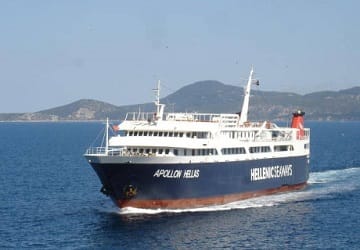
-
Recent Searches
Recent Searches
- Travel Alerts
- My Account
- Customer Service
-
United Kingdom
Agios Efstratios to Kavala Ferry
The Agios Efstratios Kavala ferry route connects Aegean Islands with Greece. Currently there is just the 1 ferry company operating this ferry service, Hellenic Seaways. The crossing operates up to 3 times each week with sailing durations from around 6 hours 20 minutes.
Agios Efstratios Kavala sailing durations and frequency may vary from season to season so we’d advise doing a live check to get the most up to date information.
Average Agios Efstratios Kavala Prices
Prices shown represent the average one way price paid by our customers. The most common booking on the Agios Efstratios Kavala route is a car and 2 passengers.
Agios Efstratios Guide
The Greek island of Agios Efstratios is a small island located in the northern Aegean Sea. Sometimes called Saint Eustratius it is around 30 km to the south west of the island of Lemnos and around 80 km to the north west of Lesbos. The island forms the regional unit of Lemnos along with Lemnos and other nearby islets. Visitors should know that Agios Efstratios is a quiet island with little rainfall during the winter with very hot summers. Popular beaches on the island include Agios Antonios, Lemonies, Avlakia which are mainly reached by caique. Agios Efstratios is linked by boat with Limnos, Agios Konstantinos, Kymi and Kavala.
ferries departing from the island depart to the port of Piraeus and to the nearby Sporades islands of Skopelos, Alonnisos and Skyros and others. There are also ferry connections to other islands of the North Aegean via a third island, and to the ports of Thessaloniki, Kavala and Alexandroupoli with a crossing time of between 5 and 10.5 hours depending on the number of ports called at en route.
Kavala Guide
The Greek city of Kavala is the capital and main port of the Kavala region and is built on the slopes of Mount Symvolo, and is regarded as one of the most picturesque cities in Greece. By analysing the archaeological artefacts found, the city is able to trace its history back to Prehistoric times. The city's original centre was restricted to the Panayia district which has been inhabited since the 7th century BC. At the beginning of the 16th century the city expanded and managed to maintain its new borders until 1870 although the city as can be seen today only really began to form after 1928.
The cities fortunes were in large part a result of its important location, its port and to its natural defences on the peninsular, on which the old city was built. Wandering around the city visitors will be struck by its neoclassical mansions and large tobacco warehouses which are a physical symbol of the city's recent past. In the “Mecca of tobacco” as Kavala was named in the past, thousands of tobacco workers earned their living.
From the city's port ferries operate to Agios Efstratios, Limnos, Lavrio, Kirikos, Chios, Karlovassi, Psara, Vathi and Mytilene.


